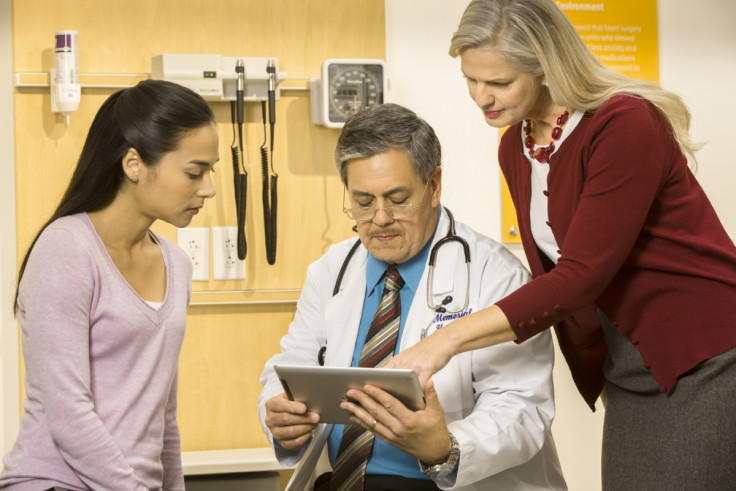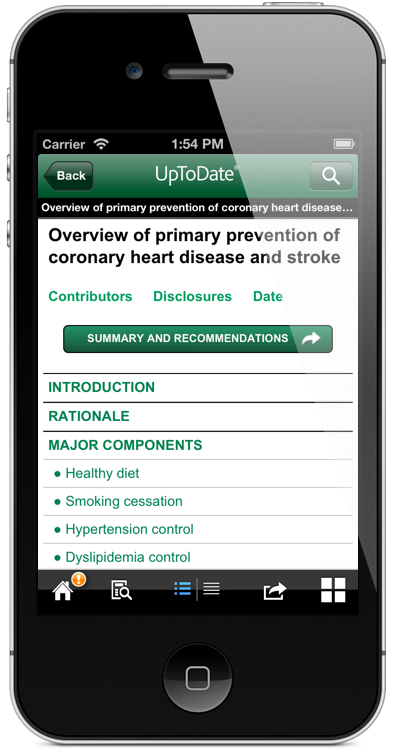Healthcare Transformation: Rise of the Digital Doctor with UptoDate App

Healthcare has transformed over the last decade as the use of technology has enhanced patient assessment, treatment and aftercare.
While we all know about the evolution of cutting edge technology, to root out or treat diseases and other ailments, there are some seemingly simple devices or applications that have flown under the radar but have made a major impact into the way the doctor and patient relationship is conducted.
Wolters Kluwer Health created a smartphone and tablet based application that has given doctors immediate evidence-based opinion and treatment recommendations on over 10,000 conditions.
But the app, called UptoDate, isn't just a Wikipedia of ailments, it is peer-reviewed and collated by over 5,000 doctors and clinicians.
"My background is as a primary care physician and when I first started my practice in 1992, the typical scenario would mean that I would have to sift through text books and various other physical documents, as fast as possible, to help find the answer to my diagnosis," said Dr Denise Basow to IBTimes UK, who also works with Wolters Kluwer.

"It was incredibly frustrating because I'd have to do this as quickly as possible and sometimes it was an inefficient way to spend the limited time you have with a patient."
"However, with technological innovations like these, it has helped transform the medical industry and has allowed the doctor to become more efficient with their time."
The 'digital doctor' is able to use handheld technology to make faster and more authoritative decisions, based on the latest knowledge and research. This also links with the trend towards Evidence-Based Medicine (EBM).
With the amount of medical breakthroughs, the app is designed to help doctors sift through the 'explosion of information' in the market.
Currently, 100 hospitals in the UK subscribe to UptoDate, where three quarters these are NHS trusts.
A further 1,700 individual doctors also subscribe to the service, which is accessible across desktop, iOS, Android and Windows Phone 8.
"Since the early 90s, medicine and even health has evolved in many ways, not just the digital perspective," said Basow.
"Accessing health records as well as looking at patient data, studies and information is abundant but there hadn't been necessarily the tools to root through all the information."
There is a wealth of literature examining why, how, and where healthcare professionals search for information. Answering queries related to patient care is the main reason for searching. Another commonly cited reason for searching is continuing professional development (CPD).
Clinicians often search for information to support or confirm their existing knowledge which is why electronic resources have become vital to this process.
Widely used in the clinical setting, point-of-care (POC) information tools provide a convenient reference point for clinical staff enabling access to filtered information through desktop and mobile applications.
However, with the rise in digital applications used by doctors, the human interaction is becoming a little bit more difficult.
"The digital transition has worked wonders for efficiency but the doctor and patient relationship has suffered slightly as a result," said Basow.
"You do see and speak to patients a little bit less because the tools are readily available. However, I think every doctor will say that there will never be an overall substitute for your knowledge, taking a good patient history and decent physical exam."
Case Study
Dr Effrossyni Gkrania-Klotsas, Infectious Diseases at Addenbrooke's Hospital, Cambridge University Hospitals NHS Foundation Trust
I am an Infectious Diseases Consultant and I have an inpatient and outpatient practice addressing a mix of diseases covering everything from common infections all the way to transplant infections, HIV, the works.
I did my residency and fellowship in the US and was introduced to UpToDate around 1999-2002 by a programme director who was a big fan.
I've been using it ever since. I originally used the online web-based version on the desktop.
About a year and a half ago, I downloaded the app on my Android phone.
Using the app versus the web version has been a tremendous change. With the number of times that questions come up with colleagues, at the bedside, in corridors and elevators, I can actually pull the Android from my pocket and look something up.
It has completely revolutionised how I use UpToDate. I use a lot of the app's medical calculators and the drug database. I often use it at the bedside because it has a different drug database from the one provided to us by the hospital, so it can complement the clinical information you use in real-time.
The ease of using the app on the mobile phone is such that even if I'm sitting in front of my computer at my desk, I'm much more likely to use my phone now. It's just so easy especially with the improved mobile phones available today.
One of my favorite things about using the UpToDate app is the access to Lexicomp, the Wolters Kluwer Health drug database. I had a patient the other day who was reporting a very unusual symptom that he was claiming was a side effect of an HIV medication he was on.
I looked it up in our local BNF (British National Formulary) system and the information was very generic. I then looked it up on UpToDate and was able to show that in fact, he was right.
UpToDate noted that 1-6% of patients experienced headaches while using this medication. With UpToDate, getting an answer was really quick and I was able to show the patient.
© Copyright IBTimes 2025. All rights reserved.






















